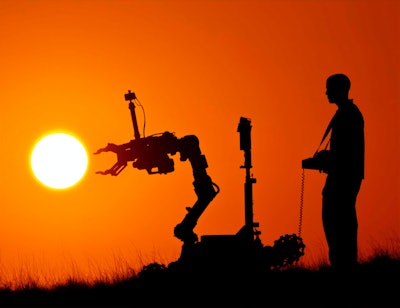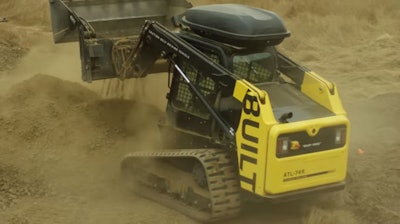
Source: GlobaData
The construction industry is increasingly exploring the use of robots to speed up work and alleviate skills shortages. But where could this lead?
According to GlobalData construction journalist Luke Christou, “The use of single-task robots (STR) in the construction industry has been growing for some time. The use of robotics in construction dates back to 1970s Japan. As young workers turned their back on manual labor in favor of less dangerous and physically demanding office jobs, Japan’s largest architecture, engineering and construction companies turned to automation and robotics in an attempt to stem a labor shortage.
“Many of these technologies failed to break ground, and construction’s labor issue persists," he acknowledges. However, he notes that Turner and Townsend’s 2019 International Construction Market survey shows 66% of construction markets globally report a shortage of skills.
“Labor shortages is just one of many issues that the construction industry faces," says Christou. "Lacking worker safety is another pressing issue, with construction the leading industry for workplace fatalities in many parts of the world. The industry seems largely in agreement that these significant advancements will first focus on removing humans from dangerous tasks. Automation is also likely to take over the tedious tasks, freeing up time for laborers to complete more fulfilling work."

“There is a huge demand and backlog of construction work that can’t be built — think roads, solar and wind farms, energy pipelines, levees and homes — because we don’t have enough skilled workers entering construction," says Erol Ahmed, director of communications for Built Robotics. "The tasks that are the most dangerous, most repetitive or most remote are the tasks likely to become automated to keep construction workers safer and allow them to focus on more complex and skilled labor.”
Yet, Stuart Maggs, CEO of Scaled Robotics, stresses, “The end goal has to be not just automating tasks that human beings can do, but developing new construction manufacturing methods that are only possible through robotics, opening up new possibilities for building design and performance.”
Related Content
How Automation and Robotics Should Inspire Rethinking Construction Jobs
Are Human Robots the Future of Construction?
Trimble, Hilti and Boston Dynamics Teaming Up to Test Autonomous Robots in Construction



















